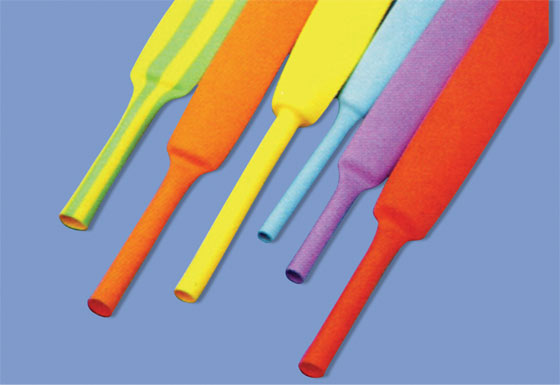Heat shrink tubing is a mechanically stretched, expelled plastic tube that shrinks to between one fifth and one sixth its unique size when it is connected. The most well-known materials for this are nylon and polyolefin, produced and delivered in a wide range of mixtures. The precise piece is dictated by the planned reason. Could be infinitesimally thin or thick, overwhelming and inflexible. Producers review the nature of shrink tubing by the extension proportion, which contrasts the development rate with the recuperation rate of the tubing. Shrink tubing is utilized to protect the wires of electrical frameworks, conveyors, joints and terminals. On the off chance that the protection encompassing the wires has been harmed, heat could be connected to secure the uncovered wires.
Crude heat significance tubing to which has not been connected, is initially fitted to the wiring after the tubing is cozily set up, an over or heat firearm is utilized to raise the temperature. It is conceivable to apply to the tube with a patching iron or even a normal lighter; nonetheless, when utilizing these techniques there is less control of the heat, which can prompt an uneven complete and can even harm the shrink tube. It is not advised to use these methods to apply to the tubes on the grounds that it can harm the tubing or lead to a glitch. At the point when it is connected to the heat, the breadth of the material will diminish by 15% – 50%, contingent upon the kind of material utilized.
Producers of Tubing Out Of Thermoplastic Materials
Normal thermoplastic materials incorporate polyolefin, fluoropolymer, Polyvinyl chloride, neoprene, silicone elastomer and Viton. Several sources on this this page discuss the use of thermoplastic materials. Basically, the material utilized decides how tubing will respond when connected. In the event that the maker needs the material that was contracted to wind up denser when it is connected, material holding monomers, or particles that tie synthetically to different atoms for a polymer are used. At the point when the monomers artificially bond, they consume up less room. As the volume of the material abates, its thickness builds.
FEP Teflon Tubing
One sort of heat shrink tubing that is high caliber is the FEP Teflon Tubing which alongside the glue substrate additionally is intended to withstand higher operational temperatures. The shrink ratio is 1:3, which is dependent upon 25% of the whole surface range It can work in temperatures from -67 up to 204 degrees Celsius. As discussed here, it is in this high resistance to temperature that the links surpass in quality.
Substance safety can additionally be exceptionally essential to petroleum items, to receptive substances of diverse sorts and in addition to outer surface heat. The FEP Teflon Tubing is intended to withstand these conditions and to work appropriately without disturbances. Also, the cables will not burn, being chemically inert and will also not support a live flame as the Teflon coating is a very good fire retardant.
Materials Used to Make Tubing Fluctuate By Their Working Temperature Range
Fluoropolymer works from -55 to 175 C. Viton works from -55 to 220 C. Elastomeric tubes utilize a scope of -75 to 150 C. Polyolefin has a scope of -55 to 135 C. An extra capacity of tubing is the shade coding of wires. In the 2000s, workstation makers started the inner part wiring of machines with a specific end goals to make a clean appearance.
